Search results for: 'Roma'
-
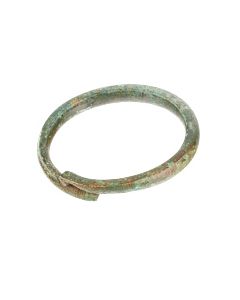 Decorated Roman bronze bracelet
Decorated Roman bronze braceletWundervoller Bronzearmreif mit überlappenden Enden und quadratischem Profil. Die beiden Enden sind kunstvoll geformt und mit Ritzdekor verziert. Grüne bis schwarze Patina.
Price: on request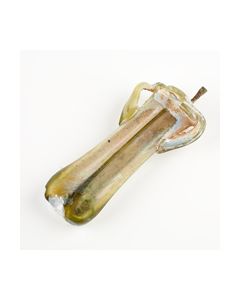 Very rare Roman glass double unguentarium with applicator
Very rare Roman glass double unguentarium with applicatorPerfectly preserved, worth the exhibition in a museum. From an old British collection.
Price: on request Late Roman glass bottle
Late Roman glass bottleFrei geblasenes Glasfläschchen aus dem 3. bis 5. Jh. n. Chr., Spätantike.
Price: on request Fragment of a Roman brick with maker's mark TA.IN
Fragment of a Roman brick with maker's mark TA.INZiviler Ziegeleibetrieb. Der Fundort ist Trier. Ende 3. bis Beginn 4. Jh. n. Chr. Selten.
Price: on request Rare Roman brick with maker's mark APIONAS
Rare Roman brick with maker's mark APIONASErweitert zu lesen als [C]APIONAS, zivile Großziegelei. Spätantike. Seltene Stempelvariante. Fundort: Wahrscheinlich Trier.
Price: on request Missale Romanum - rare 1610 missal
Missale Romanum - rare 1610 missalSchweinsledereinband auf Holzdeckeln. Aus der Sammlung Prof. H. Brosch, Autor historischer Fachpublikationen und wissenschaftlicher Museumsbeirat. Träger des Bundesverdienstkreuzes.
Price: on request Late Roman oil lamp from Southern Israel
Late Roman oil lamp from Southern IsraelVom Brennloch führen zwei Halbvoluten zum Spiegel. Schulter dekoriert. Museal erhalten.
Price: on request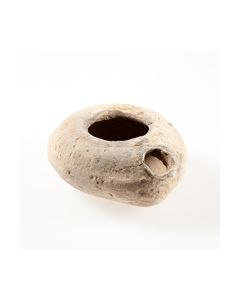 Late Roman oil lamp from South Israel with maker's stamp
Late Roman oil lamp from South Israel with maker's stampLeicht herausgezogene Schnauze, radiales Liniendekor auf Schulter. Exzellente Erhaltung, Rußspuren.
Price: on request Late Roman oil lamp from Southern Israel
Late Roman oil lamp from Southern IsraelSchulter mit einem Netzmuster aus radialen Linien und jeweils drei horizontalen Querstrichen verziert.
Price: on request Late Roman discus type oil lamp
Late Roman discus type oil lampSchulter mit Eierstabdekor, außen mit Doppelppeläxten dekoriert. Exzellent erhalten.
Price: on request Late Roman discus type oil lamp
Late Roman discus type oil lampSchulter außen mit zwei sich gegenüberliegenden Doppelppeläxten dekoriert. Exzellente Erhaltung.
Price: on request Late Roman oil lamp from Southern Israel
Late Roman oil lamp from Southern IsraelRunde Öllampe mit leicht herausgezogener Schnauze. Vom Brennloch führen zwei Halbvoluten zum Spiegel.
Price: on request Late Roman oil lamp from Southern Israel
Late Roman oil lamp from Southern IsraelZwischen Einfüll- und Brennloch drei erhabene Linien. Schulter dekoriert. Museal erhalten.
Price: on request Late Roman discus type oil lamp
Late Roman discus type oil lampInteressantes, museal erhaltenes Stück. Bei Herstellung an einer Seite eingekniffen. Mit starker Sandpatina.
Price: on request Roman glass
Roman glassRoman glass from the 1th to 4th century AD. Small flask in fine condition.
Price: on request Stamped Roman tile found in Trier
Stamped Roman tile found in TrierThe tile belongs to the ADIVTE/ADIVTICE group and was produced in the late 3rd or early 4th century AD. Found in Trier, Germany.
Price: on request Fragment of a stamped Roman tile
Fragment of a stamped Roman tileThe stamp AYK is not discussed in the literature at hand and thus may be rare.
Price: on request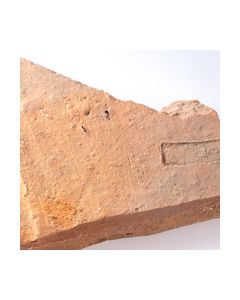 Fragment of a stamped Roman tile
Fragment of a stamped Roman tileProbably manufactured in Treves area, Germany. Roman Empire, 3rd - 4th century A.D.
Price: on request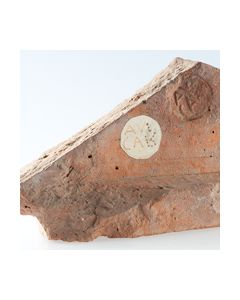 Fragment of a stamped Roman tile
Fragment of a stamped Roman tileThe stamp AV CA is not discussed in the literature at hand and thus may be rare.
Price: on request Roman tile with inverse stamp
Roman tile with inverse stampProbably found in Trier, Germany. Rare inverse stamp, very well preserved and interesting object.
Price: on request Large stamped Roman tile fragment
Large stamped Roman tile fragmentFrom the ARMO group. Probably manufactured in Treves area, Germany. Roman Empire, 3rd - 4th century A.D.
Price: on request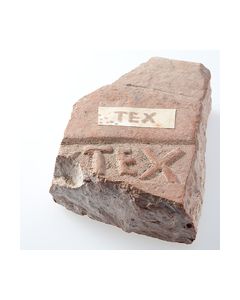 Stamped Roman tile
Stamped Roman tileThe tile belong to the ADIVTE/ADIVTICE group. Very deep and perfecty preserved stamp. Reported to have been found in Trier, Germany.
Price: on request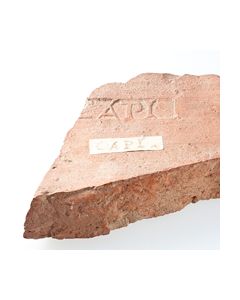 Stamped Roman tile found in Treves
Stamped Roman tile found in TrevesPerfectly preserved with deeply carved stamp. From the CAPIONACI group.
Price: on request Roman oil lamp - found in England
Roman oil lamp - found in EnglandFundregion: England. Faszinierendes Belegstück für das Ausmaß des antiken Handels. Museale Erhaltung.
Price: on request Roman sandal sole type fibula
Roman sandal sole type fibulaDie Form wird in der Literatur als Schuh- oder Sandalensohle bezeichnet. Der sehr dekorative Fibeltyp war extrem beliebt und im zweiten Jahrhundert weit verbreitet. Er stammt aus den nördlichen römischen Provinzen.
Price: on request Roman oil lamp showing cock
Roman oil lamp showing cockVollständig erhalten, mit Spuren eines dunkelroten Überzugs. Sehr schöner Zustand mit gut erkennbarem Motiv. Römische Kaiserzeit.
Price: on request 101 Roman bronze coins
101 Roman bronze coinsVon Augustus über die Soldatenkaiser bis zur Spätantike. Diverse Nominale, Durchmesser ca. 13 mm - 27 mm.
Price: on request Elegant Roman glass bottle - found in a ship wreck in the Mediterranean
Elegant Roman glass bottle - found in a ship wreck in the MediterraneanElegantes Glas aus römischer Zeit. Geborgen aus einem Schiffswrack im östlichen Mittelmeer und in nahezu perfekter Erhaltung. Die gereinigte Außenseite gibt den Blick auf die antike Glassubstanz frei.
Price: on request Decorated Roman silver ring
Decorated Roman silver ringRömischer Fingerring aus Silber. Auf das Ringband aufgesetzte Ringplatte mit Ritzdekor. 2. bis 3. Jh. n. Chr.
Price: on request Roman bronze statuette of Venus
Roman bronze statuette of VenusLeft arm and pigtail missing, otherwise perfectly preserved. From an Austrian collection, in this since the 1960s.
Price: on request Römische Daroma Öllampe
Römische Daroma Öllampe1. bis 2. Jh. n.Chr. Länge 70mm, Breite 55mm, Höhe ca 25mm. Perfekt erhalten. Einer der interessantesten Typen aus der römischen Zeit.
Price: on request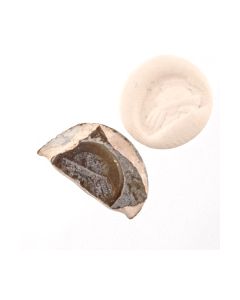 Roman intaglio with portrait head
Roman intaglio with portrait headDark glass paste with portrait head of a young woman. She is wearing a traditional headband. The hair is worn in locks falling in her neck. Dating from Roman Republic to Roman Imperial times. From the Professor Brosch collection of ancient engraved gems.
Price: on request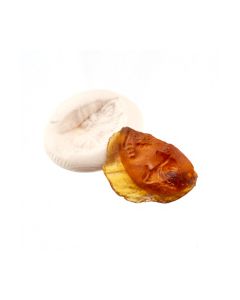 Roman intaglio of good workmanship
Roman intaglio of good workmanshipQuality ring stone from orange-brown glass. Showing a draped bust. Roman period. From the Professor Brosch collection of ancient gems.
Price: on request Roman Intaglio with helmeted bust
Roman Intaglio with helmeted bustWorkmanship of highest artistic quality. Detailed portrait of a young military wearing a Corinthian helmet. Roman Republican to early Roman Imperial. Made from beautiful violet glass imitating amethyst.
Price: on request Roman Intaglio with helmeted bust
Roman Intaglio with helmeted bustNice ancient intaglio made of beautiful greenish yellow glass. The quality work shows the portrait of a young military wearing a Corinthian helmet.
Price: on request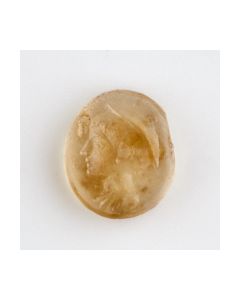 Roman Intaglio with bust of Mercury
Roman Intaglio with bust of MercuryThe glass paste shows Hermes in travel garment. The motive is taken from older Greek gem stones. In Roman culture the god Hermes was known as Mercurius (Mercury).
Price: on request

